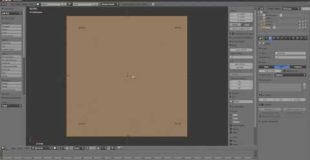https://i.ytimg.com/vi/-Hr03JFBMU8/hqdefault.jpg
Hey guys!:)
In this latest blender installment I will show you how Blender can be used for very precise architectural measurements. Often people say Archicad, Autocad etc. are infinitely better for architecture because Blender cannot measure to enough detail. WRONG! watch the tutorial!
Sixthlaw
source

29 responses to “Blender Architecture Measurments Tutorial!”
For those, who are watching in 2018+ There's no numerics tab, instead we have Edge info and Face info. Below there're boxes, that do the same thing.
Thanks. Blender is f powerful
you solved my problem god like
So… In order to create a part with defined measure, i have to very carefully drag the edge while watching for the measure value to fit, and there is no "press Add Line, type in the popup window the exact lenght, hit Enter, the line appears" – feature? I mean, Blender is not CAD, but still. I have used the "dimensions" in the Transform tab on the right to measure, but i'm a bit tired to use three work steps (add object, transform it, delete it again) just to get a part with precise measurements. There must be a more efficient way to do it.
In the drawing that you show (and build over it to show the scale works properly) it has measurements that are similar to that of architectural drawings. I've been using Google Sketchup (which is a free version of an architect like program) and it allows me to add the measurements and drag the sizes to the side (similar to your drawing). In Blender it appears like you can't really do this, it only shows the measurements in the 'dimensions' area when you have said item highlighted.
Do you know if there is a way to have a layer or scene or something that shows all of the measurements (like a snapshot for that layer). So if I choose and want to print that page it shows all measurements that I've selected? If you have another video on this and I just missed it can you please link. Thanks!
Awesome! Subscribed!
so, where is the second half of the video on angles?
Thank you so much! Brilliant tutorial!
Exactly what i needed thanks
thank you!
Good job
Nice. Now I also need those dimensïons drawn the same way as in the imported image. And I need it for three different views. Can Blender do it as well?
perfect this is what I was looking for
sure, blender is not an alternative to any good CAD software… BUT it seems to be ideal for "designing" any 3D-woodworking-models. great tutorial, many thanks for that!
It's called vertex not vertecee, and Blender is pain in the asre if you need to be precise.
Very helpfull!
Thank you very much.
This is fantastic. Thanks for sharing this!
Architects (and engineers) also have a need to PRINT their drawings for use by others. I can't remember seeing a framing crew, a plumbing, crew, and electrical crew on a job whipping out a tablet and trying to run Blender to see what dimensions they need on a project. So HOW can anyone using Blender create and PRINT the type of drawings needed for the "craftsman." To my knowledge we aren't printing full size structures yet. Blender for architecture and engineering will never "fly" if it can't allow the proper export of the work. As I investigate I'm beginning to believe Blender will never be a tool used by Architects and Engineers WITHOUT SERIOUS UPGRADES.
This is really a DEMONSTRATION more than a tutorial. I watched it multiple times (it is hard if not impossible to read the screen much less grasp what the "presenter" does before he flits on to the next part.)
Without starting,stopping, backing up multiple times can anyone trying to learn this (definition of TUTOR is???) really learn anything from this tutorial?
The presenter might understand the material but I'll suggest he doesn't know how to teach. (And part of that is directly related to a small Youtube screen. Imagine sitting in the very back of an auditorium watching a teacher present the material on a tablet.)
Program is useless without imperial precision. Please somebody make a US VersionI need a grid that is in 1/8" increments and be precise down to 1/32".
Thanks! this was exactly what I needed : )
what about diagonal lines?
Higgidy ay! Thanks for a bunch!
Hi there.
Interesting tutorial but, what I find more interesting is your accent (quite hard sometimes). Are you from Australia? I could say New Zeland, but I think you sound, speaking about Blender, more like Andrew Price than like Alex Telford (he's from New Zeland).
Thanks & cheers from Argentina (Hope it is from England someday)
Marcelo.
THANK U
Brilliant tutorial. Thank you so much!!!
How do you grab the two edges?
So incredibly helpful! great tutorial! 🙂